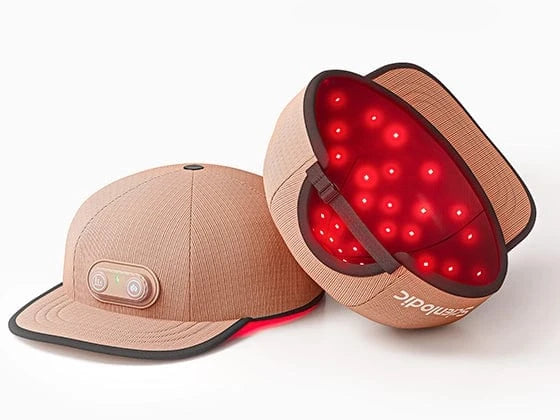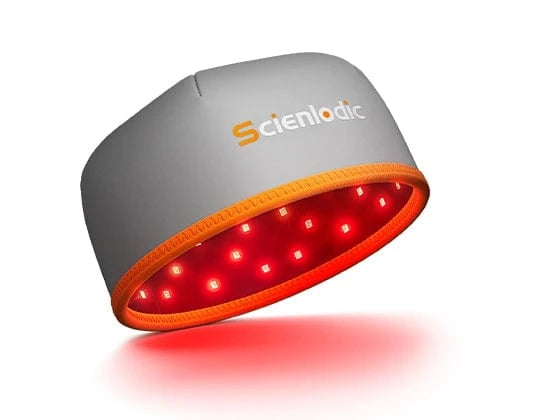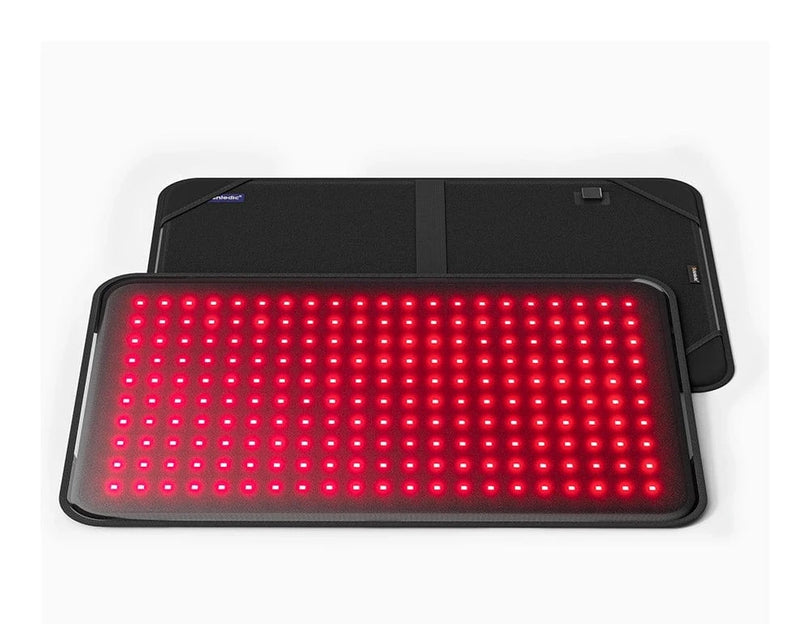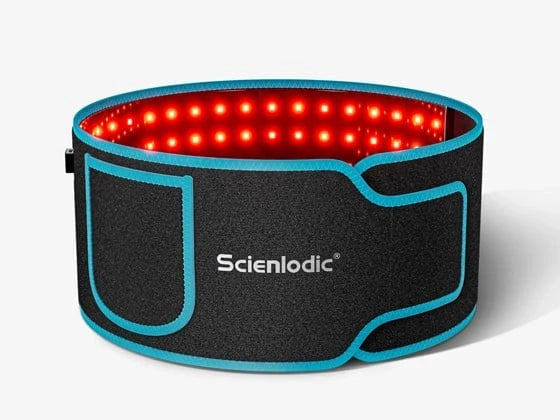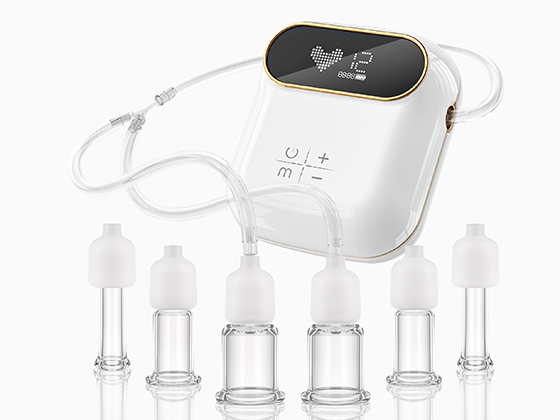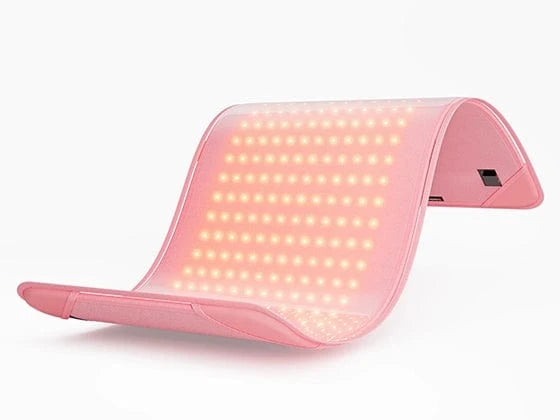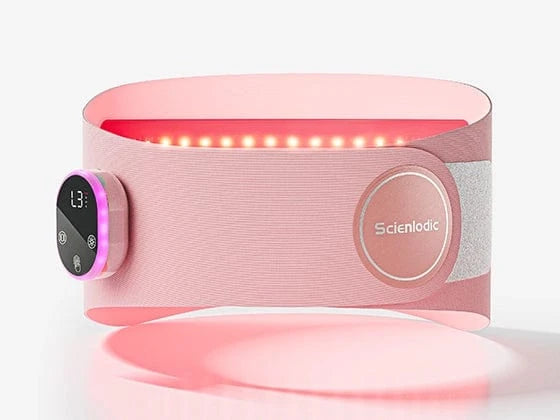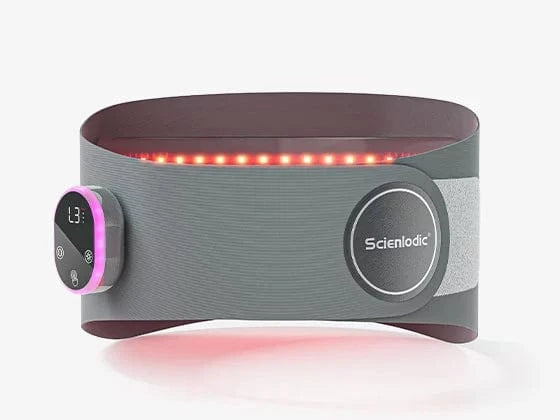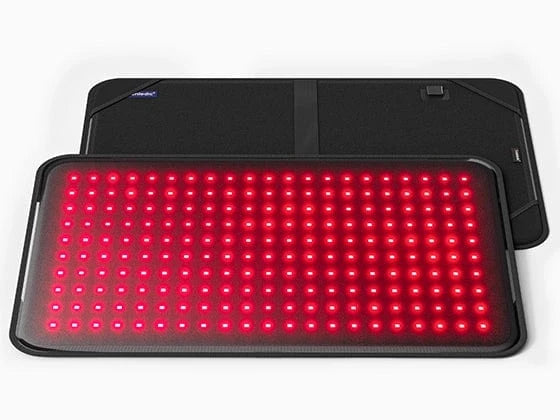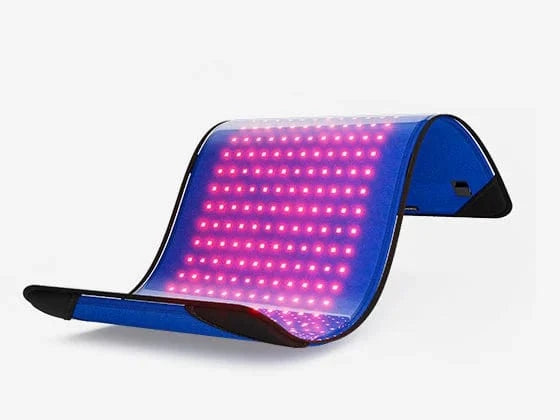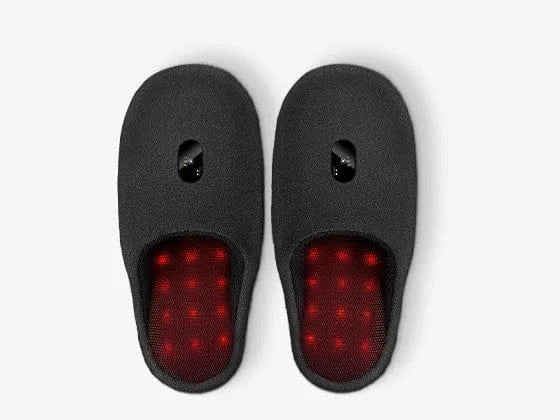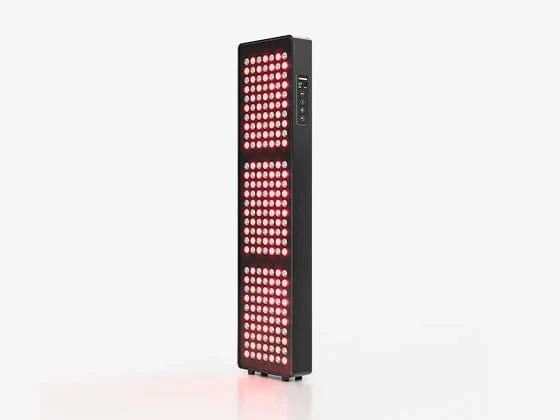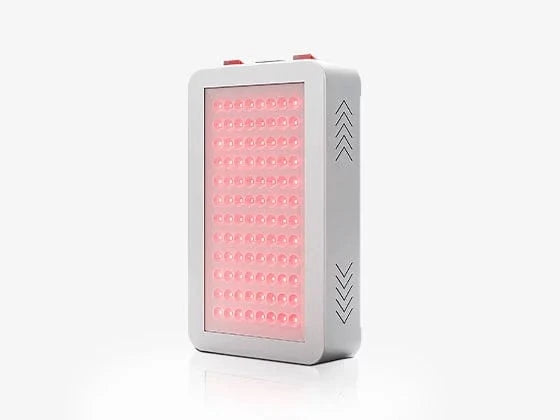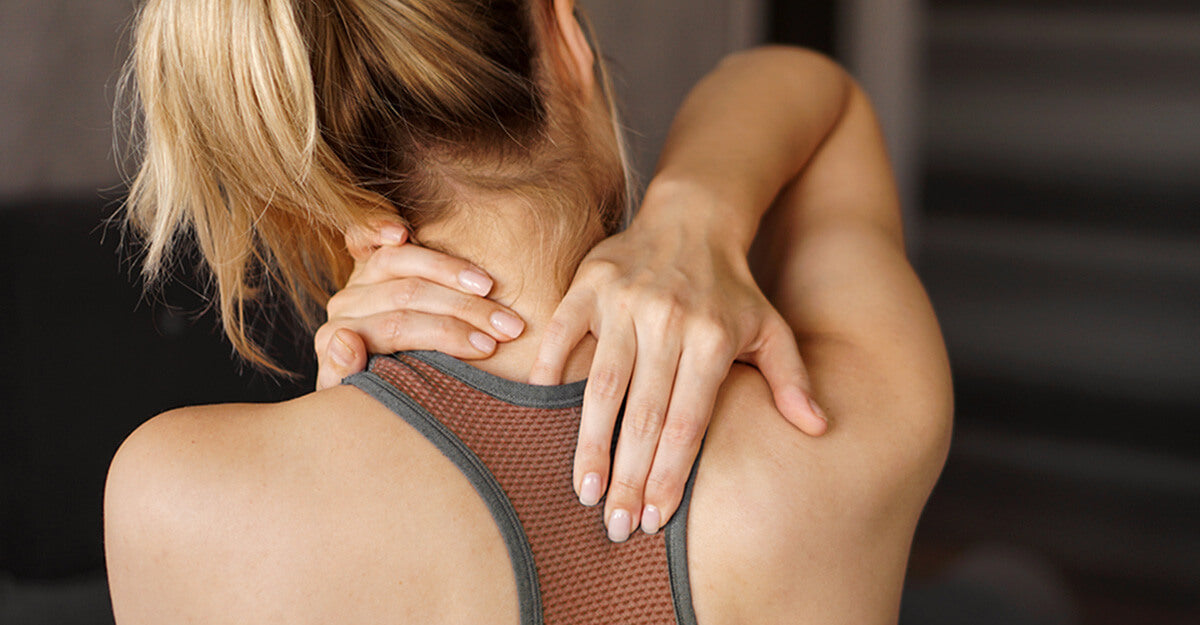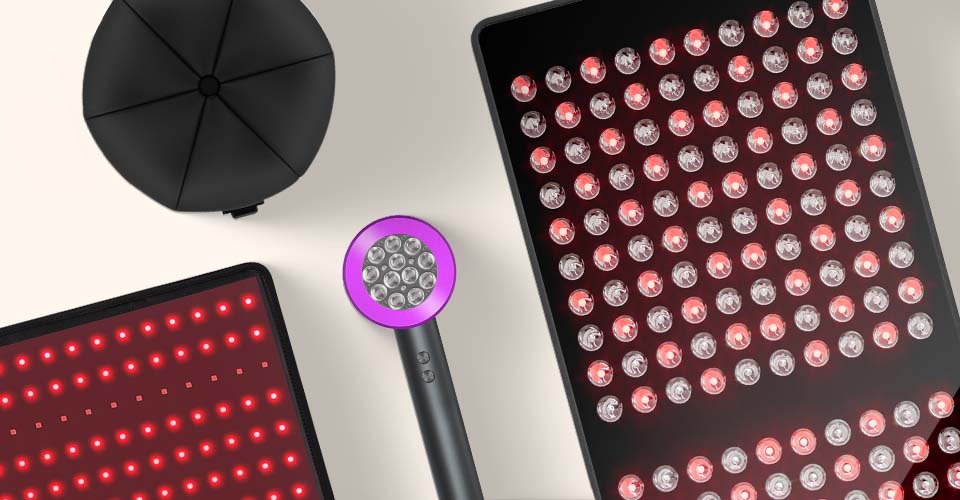Red light therapy has been gaining popularity as a non-invasive way to improve skin health and reduce the appearance of cellulite.
Cellulite has always been a popular health topic, but we have found that there is still very little high-quality information online about red light therapy for cellulite. As a result, many people do not know the causes of cellulite or how to reduce or eliminate it at the lowest cost.
In this guide, we will explore the relationship between red light therapy and cellulite and how it promotes collagen production and improves circulation. We will also discuss the benefits of red light therapy and the best devices to use.
Table of Contents
- What is Cellulite?
- What Causes Cellulite?
- Does Red Light Therapy Actually Help Cellulite?
- How Does Red Light Therapy Help Cellulite?
- Benefits of Red Light Therapy to Cellulite
- You Can Reduce Cellulite at Home
- Best Red Light Therapy for Cellulite at Home
- How to Use Red Light Therapy for Cellulite?
- Cellulite and Stretch Marks: Are They the Same Thing?
- Conclusion
The guide is structured to provide a comprehensive understanding of cellulite, its causes, and how red light therapy can help.
By the end of this guide, you will clearly understand how red light therapy can benefit your skin and reduce cellulite. So, let's get started!
What is Cellulite?
Cellulite is a very common, harmless skin condition that causes lumpy, dimpled flesh on the thighs, buttocks, hips, and abdomen. This condition is most common in women.

Cellulite appears as skin with a cottage cheese or orange peel-like texture and is sometimes described as having a white cheese-like or orange peel-like texture.
Although medically harmless, cellulite can damage our appearance and cause anxiety and a lack of confidence. After all, we all want our skin to be smooth and vibrant.
Cellulite seems to be more common in women than in men. According to data from the Cleveland Clinic, 80% to 90% of all women who have gone through puberty have cellulite, while less than 10% of men have it.
Most women develop cellulite after puberty. As we age, our skin loses elasticity, making cellulite more common. Women's fat typically distributes in the thighs, buttocks, and hips, which are common areas for cellulite.
What Causes Cellulite?
The cause of cellulite is not yet fully understood, and there seems to be little research in academic databases. However, there is convincing clinical evidence that fibrous septae play a central role in the pathophysiology of cellulite. [1]
Further reasoning suggests that fat deposits form when the fibrous septae connecting the skin and underlying muscle irregularly contract. This contraction tightens your skin, pushing the normal layer of fat under the skin upward. The result is the appearance of cellulite on the skin.
Does Red Light Therapy Actually Help Cellulite?
While more research is needed to fully understand the effects of red light therapy on cellulite, some studies have suggested that it may help reduce the appearance of cellulite by promoting collagen production and improving circulation.
In August 2011, Fernanda Rossi Paolillo and 19 other women aged 25-55 performed an experiment to evaluate the effectiveness of infrared light therapy in reducing fat. The participants were divided into two groups; the control group received only treadmill training, while the red light therapy group received red light therapy during treadmill training. The results were remarkable, with the treadmill and red light therapy group showing a significant reduction in cellulite. [2]
In another experiment conducted in June 2013, researchers combined red light therapy with vibration therapy (both are popular non-invasive therapies) to experiment on men and women aged 18-64 with localized obesity or fibrous fat deposits. [3]
After a total of 6 weeks of treatment, the researchers statistically analyzed the results and found that the thickness of fat had significantly decreased compared to the pre-treatment measurements. In addition, subjective and objective tests, as well as ecological and histological evaluations, confirmed the reduction in fat thickness.
With the support of relevant research, we can confidently say that red light therapy for cellulite has been proven to be feasible. But even with this knowledge, we still need to delve further into the underlying mechanisms of red light therapy for cellulite reduction.
How Does Red Light Therapy Help Cellulite?
Red light therapy can eliminate cellulite for many reasons, not just because the light of appropriate intensity and wavelength can break down fat cells.
The appearance of cellulite may be influenced by factors such as age, skin tightness, collagen levels, and body weight. Continuing, we will delve into the relationship between cellulite and skin and weight issues that concern our readers.
Loose Skin Makes Cellulite Look More Severe
As we age, the body's collagen and elastin production naturally decreases, which may lead to thinner and less elastic skin. The underlying fat becomes more visible when the skin is not as thick or elastic as it used to be.
Therefore, we can say that the health of the skin and the formation of cellulite do not necessarily have a direct relationship. However, loose skin can highlight the severity of cellulite visually.
Many researchers have tried experiments using topical creams with multiple skin-targeting ingredients. The results show that daily use can significantly improve the severity of cellulite, but the improvements last for a short time (less than two weeks) after treatment is stopped. [4]
Although this study is not directly related to red light therapy, it does suggest that improving the condition of the skin can improve cellulite, and the two are closely related and can benefit each other.

Red light therapy can tighten loose skin, which can help reduce the appearance of cellulite. Below, I will discuss how red light can improve skin vitality and accelerate the repair process, resulting in tighter, more youthful-looking skin.
Red Light Therapy Can Tighten Your Skin and Reduce Cellulite
In February 2014, Alexander Wunsch and other researchers conducted a large-scale experiment to study the safety and effectiveness of red light therapy in large-area and full-body applications. A total of 136 volunteers participated in this prospective, randomized, and controlled study. [5]
They were surprised to find that red light helps reduce fine lines, wrinkles, and skin roughness and increases collagen density in the skin. Patients were highly satisfied.

In this experiment, red light therapy showed a remarkable potential for skin tightening. It not only targets wrinkles or spots but comprehensively stimulates skin vitality, thereby fundamentally improving the skin's condition, including tightening the skin.
In simple terms, the relationship between collagen, skin vitality, and cellulite is that all three must be in good condition for one to look truly good. They are interconnected and dependent on each other.
Infrared collagen treatment is a type of red light therapy that may help tighten skin and reduce the appearance of cellulite.
In the same experiment as mentioned above, the researchers not only focused on the visible improvement in skin condition (although it was already very intuitive) but also attempted to see from the essence whether the skin had gained better vitality under the activation of red light therapy through collagen ultrasound scanning.
Refer to the figure below. The left is before the experiment, and the right is after 30 sessions of red light therapy. The yellow dots stimulated by light in the picture are collagen. The effect of the before-and-after comparison is remarkable.

This experiment shows that red light therapy can promote your skin to produce more collagen, making your skin more vibrant and accelerating the speed of self-repair. With improved skin conditions, the prominence of cellulite naturally decreases.
Collagen, skin vitality, and cellulite reduction are among the comprehensive benefits that can be attained with red light therapy. These benefits cannot be achieved with other therapies.
Red Light Therapy Can Also Contour Your Body While Reducing Cellulite
About the relationship between weight and cellulite, there is very little research available. However, looking at this issue from a theoretical perspective, the more fat there is in the body, the greater the probability of it accumulating and forming cellulite.
Red light therapy may also be used for body contouring and weight loss, in addition to reducing cellulite.
Red light contouring has been found to have several benefits, including:
- Increasing cellular metabolism and energy
- Increasing collagen production
- Encouraging the release of fat from cells
Although the field of red light contouring/sculpting is new, studies in the field of LLLT indicate the efficacy of light for body shaping.
For example, a randomized study in Korea showed significant waist circumference loss after four weeks of using a 635-680 nm LLLT device twice a week for 30 minutes on 40 healthy young men and women without changes in diet or exercise habits. [6]
Red light therapy has unique effects on weight loss and cellulite reduction. Addressing multiple issues with the same therapy and device is good for ordinary consumers.
In another article, we have analyzed the effects of red light therapy on weight loss, including the principles, effects, and specific usage methods, which you will definitely benefit from.
Benefits of Red Light Therapy to Cellulite
After learning that red light therapy can indeed help with fat removal, you may have more questions. For example, why should you use red light therapy instead of other treatments such as surgery, massage, or drug therapy?
Here are some unique benefits you can get when using red light therapy to fight cellulite:
1. Red light therapy is a non-invasive, non-thermal therapy that does not require surgery, avoiding painful and lengthy healing during and after the surgery. Red light therapy uses light-emitting diodes (LED) bulbs to safely bathe the body in red and near-infrared (NIR) light waves rather than exposing you to the cold surgical table.
2. Compared to traditional physical therapies such as massage, light therapy can act on deeper tissues, such as subcutaneous fat and the fibrous septae mentioned above.
In clinical practice, massage only temporarily improves the appearance of cellulite. [8]
British researchers found in a 2017 study that visible red wavelengths (including 610, 630, 650, and 670 nm red light) can be absorbed into the skin with a maximum depth of 4 to 5 millimeters. Another finding is that NIR light (810, 830, and 850 nm) can be absorbed into the tissue with a maximum depth slightly greater than 5 millimeters or slightly higher than 2 inches. [9]

3. Medicine cannot truly eliminate fat deposits at the root, and many people have varying degrees of allergic reactions to drugs.
4. Red light therapy can provide multiple benefits simultaneously. Health issues are not isolated. As mentioned earlier, although research on cellulite is not yet fully adequate, loose skin, excessive body fat, and insufficient collagen may all be culprits in the appearance of cellulite.
The biggest advantage of red light therapy over other treatments is that it can improve all of the above health issues at the same time. Conventional treatment methods can only solve a specific problem, such as liposuction or drugs that improve skin conditions (caffeine, retinol, etc.).
However, with all these benefits, it is important to note that before starting red light therapy, it is essential to consult with healthcare professionals to determine if it is right for your situation.
To learn more about red light therapy for cellulite, you can subscribe to our newsletter. We offer free red light consultation advice and regularly share the latest information, usage guides, and before-and-after comparisons of red light therapy. 
You Can Reduce Cellulite at Home
Red light therapy is very popular, so much so that spas and gyms around us have added this service. But is it really worth it?
We have collected information on around 15 places in California that offer red light therapy. For a single session, you can expect to pay around $40-70.

Some businesses have lower prices than $40, but upon closer inspection, they are for trial sessions that last only 10 minutes and cost $25. If you consider an hour-long session (which is normal in spas), the cost per session can be as high as $150.
Of course, to make you a long-term customer, there are usually various membership packages that look very attractive. However, some necessary treatments might not be included in the membership fees.
Red light laser treatments, such as laser skin resurfacing, may be much more expensive. According to the American Society of Plastic Surgeons' 2020 statistics, the average cost of ablative treatments was $2,509, while the average cost of non-ablative treatments was $1,445.
For chronic diseases and beauty treatments, a complete course of red light therapy treatment usually requires 3-4 months (so you can see that at least 30 treatments are needed for clinical trials and long-term observation of treatment changes). Red light therapy is not like painkillers, which can work immediately.
Suppose you have a problem with cellulite. If you go to a spa center three times a week, you will need at least $1440 in just three months, even if you don't count the cost of driving, parking, and fees.
Performing red light therapy at home has the advantage of convenience as well as being more cost-effective. A reliable red light therapy belt for eliminating cellulite costs only $199.99, and even if used once a day, it can last for three years. The cost difference only grows larger over time.
Take a close look at this carefully crafted cost list, and you will immediately see the necessity and convenience of performing red light therapy at home.

Best Red Light Therapy for Cellulite at Home
Many red light therapy devices are on the market, from small handheld devices to belts to expensive large panels. So how do we choose the product that suits us best?
Before making a decision, be sure to consider the following factors:
- Choose LED devices. As mentioned above, lasers are suitable for medical research and hospital treatment but are not ideal for ordinary people to use at home. Due to advances in LED lighting technology, high-quality red light devices are now available for home use. You can comfortably and conveniently use red light therapy at home to treat cellulite.
- Choose the appropriate red light wavelength. For treating cellulite, the most suitable wavelength is 660 nanometers + 850 nanometers (near-infrared light). The 660nm wavelength can make your skin more vibrant and promote collagen generation. The 850nm near-infrared light has a stronger penetration ability and can penetrate the tissue to break down fat cells and promote blood circulation.
- Choose FDA-cleared products. Although red light therapy devices are mature, many brands are untrustworthy and sell plant lights as "medical devices" after repackaging them.
- Choose the product that suits you, not the most expensive or with the highest light output. If you are new to red light therapy, consider whether you want to buy a panel that claims to have the strongest performance. You need to invest thousands of dollars in those panels. Sometimes, wearable products (such as belts) can be more effective in eliminating cellulite on the abdomen or thighs.
You should seriously consider the Scienlodic Red Light Therapy Belt for Weight Loss.
This belt uses advanced medical-grade chips, combined with the advantages of 660nm and 850nm (which you can turn on at the same time) to enjoy the many health benefits of composite wavelengths, such as eliminating cellulite, full-body contouring, and many unexpected benefits, such as promoting blood circulation and eliminating inflammation.
More importantly, we believe that everyone should have the right to enjoy affordable and high-quality red light therapy. After many negotiations, we have set the price at an amazing $199.99.
At the same time, many of our competitors, taking advantage of consumers' unfamiliarity with the red light market, have priced virtually identical products at $500 or more, which is not a good thing for ordinary consumers.
How to Use Red Light Therapy for Cellulite?
Here is the part you need when you already have an excellent home red light therapy device but don't know how to start. Unfortunately, most red light brands only provide a simple manual that introduces the basic usage.
Here, we will start as much as possible with red light therapy and healthy living habits, and both are indispensable.
Keep a Good Distance During Therapy
Maintaining a good distance between the device and the skin during therapy is important to avoid burns or other skin damage.
Let's first confirm whether you have a wearable device, a handheld device, or a large red light panel in your possession.
Wearable Red Light Therapy

If you have purchased a wearable device and confirmed that it is FDA-cleared, medical-grade, and has overheat protection, you don't have to worry about the treatment distance.
Just put it on and enjoy 15-20 minutes of warm and comfortable red light therapy.
To be honest, wearable devices (such as belts, pads, and mats) may be the best home devices for eliminating cellulite.
On the one hand, they are focused enough to fully adhere to the parts of the body with cellulite.
On the other hand, they are much more cost-effective than large panels, which not everyone can afford to buy directly for thousands of dollars.
Handheld Red Light Therapy

Small handheld devices' power and light density are generally not too high, especially LED light therapy devices, which are safe. Generally speaking, 3-5 inches between the device and the cellulite (or other areas) would be ideal.
However, although handheld devices are very convenient and can be used on any part of the body, long-term use can cause arm pain and discomfort.
For cellulite treatment, I would recommend using wearable devices, which have a more concentrated light and allow you to continue doing other things while undergoing red light therapy.
Red Light Therapy Full Body Panel

The benefits of panels are obvious. If you need red light therapy that covers your whole body, a panel may be one of your few options (you can also choose a large red light mat).
Since the power of red light panels is generally high, if you are new to the field of red light therapy, I would recommend wearing goggles, turning on the center intensity, and standing 15-30 inches away from your panel (depending on your sensations and the coverage of red light on your body) to begin your treatment.
Since red light therapy is often considered safe, the worst result is feeling very hot and a slight burning sensation on the skin if you are not photosensitive. With multiple treatments, you can gradually adjust your sessions' distance, intensity, and duration to find the best setting for yourself.
What Dosing Should I Take Per Therapy?
"Dosage" is a professional term. While performing red light therapy at home, the dosage is directly related to the following indicators: the distance between you and the device, the light value density (the intensity of the light), and the duration of the treatment.
Distance has already been discussed earlier.
When it comes to light value density, I would recommend choosing a device with a higher light density when selecting a device.
Scienlodic devices all have adjustments for intensity; you can always find your best intensity settings. For treatment duration, I recommend starting with 10 minutes per session for beginners and using it at least 3-4 times a week.
Short treatment times and even frequent use can help your body quickly adapt to red light therapy. It is not recommended to have a treatment session that is too long (some of our users use it while sleeping, which is not ideal), nor is it recommended to use it only 1-2 times a week.
Red light therapy requires persistent, frequent, and long-term use for you to feel its benefits.
How Long to See Cellulite-reducing Results?
Results may vary, but some users have reported visible improvement in the appearance of cellulite after just a few weeks of regular use.
In an experiment on February 1, 2014, Alexander Wunsch and other researchers selected data for the experiment respectively at 0 times (i.e., before treatment), 15 times, 30 times, and every month after that to observe the therapeutic effect of red light.
For at-home red light therapy, if you use it 4 times a week, you need to use it persistently for a month and then observe whether the cellulite has been eliminated or reduced.
According to our user feedback, generally, the first noticeable effect is an improvement in skin condition. You may notice your skin becomes smoother, more elastic, and more vibrant. After 1-2 months, there will be a reduction in cellulite and a decrease in waist or leg circumference.
Since everyone has a different physical constitution, sometimes you need to use red light therapy for more than three months before observing visible results. People with a faster metabolism may see changes more quickly due to their body's ability to adapt faster to the treatment.
How to Use Cellulite Cream with Red Light Therapy?
Cellulite cream may be used in conjunction with red light therapy to enhance its effects.
If you are using prescription creams or medications, be sure to confirm with your doctor whether these medications will conflict with red light therapy.
If there is no conflict, we recommend applying the cream evenly and waiting for 30 minutes until the skin almost completely absorbs the cream. Then use red light therapy to accelerate the process of breaking down cellulite.
Why is it not recommended to use them at the same time? Since light therapy depends heavily on transmitting light, a thick layer of cream on your skin will inevitably block some of the red light from reaching or penetrating your skin.
It's like the thick fog in the jungle in the morning. Even the strong sunlight cannot easily penetrate it.
Cellulite and Stretch Marks: Are They the Same Thing?
Cellulite and stretch marks are different conditions, but they can occur together.

Stretch marks are scars on the skin after it is stretched or contracted rapidly. They can occur due to pregnancy, weight changes, or bodybuilding. They appear as slightly sunken, scar-like lines on the skin and typically appear in the abdominal area, thighs, buttocks, breasts, upper arms, and lower back.
Although these two conditions are not the same and have different causes, their impact on us is quite similar - they do not affect our health, nor are they a disease. Still, they make us self-conscious about our bodies and may attract scrutiny and ridicule from others.
Red Light Therapy for Stretch Marks: Does it Work?
In conclusion, yes!
Stretching or contracting your skin too quickly can cause the protein in your skin to rupture, resulting in stretch marks in that area. Elastin gives skin elasticity, while collagen provides structure, strength, and support. If red light can stimulate the regeneration of collagen and elastin, it can reverse this phenomenon.
An article published in the Journal of the American Academy of Dermatology in 2019 pointed out that the combination of red light (640 nm) and NIR light (830 nm) is an effective therapy for promoting elastin production. [7]
Not only does collagen help reduce the appearance of stretch marks, but the elastic properties of elastin may be the key to preventing the formation of stretch marks in the future.
In this way, red light therapy can promote the formation of normal, healthy skin cells (i.e., non-scar tissue) as new cells form at the bottom of the scar. Eventually, as the outermost layer of stretch marks sloughs off, new normal skin cells can take its place.
Conclusion
Red light therapy is a non-invasive treatment gaining popularity due to its potential benefits for reducing cellulite and contouring the body. It is widely accessible and can be found in various settings such as spas, salons, and clinics.
If you are looking for a more convenient and cost-effective option, home red light therapy equipment is a great alternative. The Scienlodic Red Light Therapy Belt for Weight Loss is recommended due to its effectiveness and ease of use.
It targets specific areas, such as the thighs, hips, and abdomen, stimulating collagen production and promoting blood flow. Not only that, but it also helps reduce inflammation and speed up the healing process.
Investing in an at-home red light therapy device can be a great addition to your wellness routine, providing you with the convenience of accessing treatments at home while still experiencing the benefits of professional equipment.
However, it is important to consult with a medical professional before starting red light therapy to ensure it suits your specific situation and to discuss potential risks or side effects.
Additional Resources
[1] Lawrence S. Bass, MD and Michael S. Kaminer, MD. Insights Into the Pathophysiology of Cellulite: A Review. Lasers Surg Med. Dermatol Surg. 2020 Oct; 46(1): S77–S85.
[2] Fernanda Rossi Paolillo. New treatment of cellulite with infrared-LED illumination applied during high-intensity treadmill training. J Cosmet Laser Ther. 2011 Aug;13(4):166-71.
[3] Antonella Savoia. Low-Level Laser Therapy and Vibration Therapy for the Treatment of Localized Adiposity and Fibrous Cellulite. Dermatol Ther (Heidelb). 2013 Jun; 3(1): 41–52. PMCID: PMC3680639
[4] Sang-Young Byun. Efficacy of Slimming Cream Containing 3.5% Water-Soluble Caffeine and Xanthenes for the Treatment of Cellulite: Clinical Study and Literature Review. Ann Dermatol. 2015 Jun; 27(3): 243–249. PMCID: PMC4466275
[5] Alexander Wunsch. A Controlled Trial to Determine the Efficacy of Red and Near-Infrared Light Treatment in Patient Satisfaction, Reduction of Fine Lines, Wrinkles, Skin Roughness, and Intradermal Collagen Density Increase. Photomed Laser Surg. 2014 Feb 1; 32(2): 93–100. PMCID: PMC3926176
[6] Mary K. Caruso-Davis. Efficacy of Low-Level Laser Therapy for Body Contouring and Spot Fat Reduction. Obes Surg. Author manuscript; available in PMC 2017 Jan. PMCID: PMC5225499
[7] Low-level red and infrared light increases expression of collagen, elastin, and hyaluronic acid in skin.
[8] A Tülin Güleç. Treatment of cellulite with LPG endermologie. PMID: 19261014 DOI: 10.1111/j.1365-4632.2009.03898.x
[9] Caerwyn Ash. Effect of wavelength and beam width on penetration in light-tissue interaction using computational methods. Lasers Med Sci. 2017; 32(8): 1909–1918. PMCID: PMC5653719

